
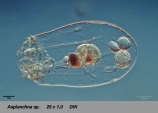
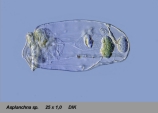
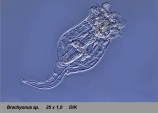
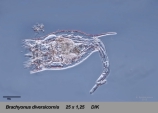
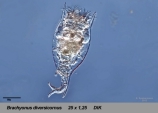
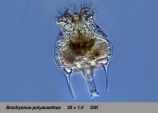
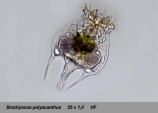
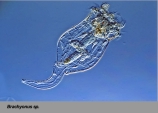
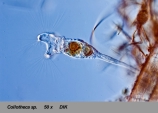
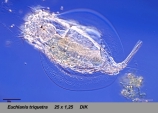
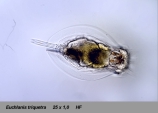
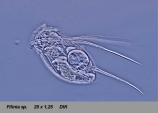
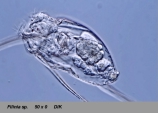
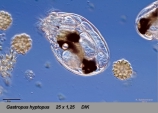
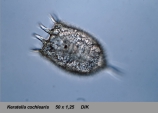
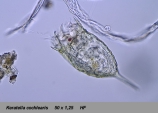
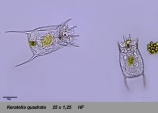
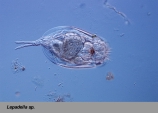
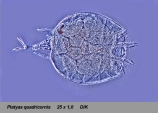
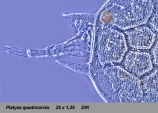
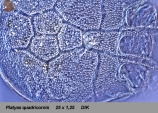
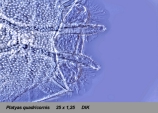
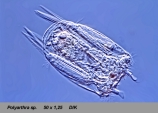
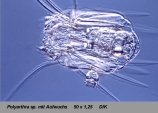
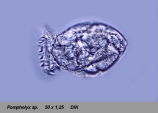
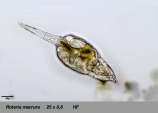

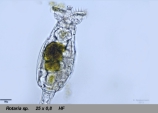
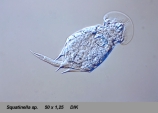
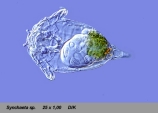
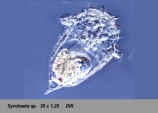
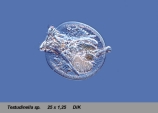
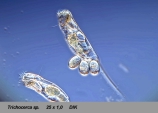
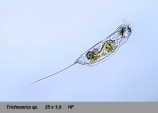
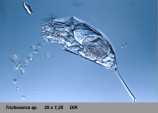
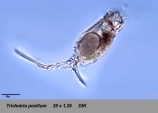
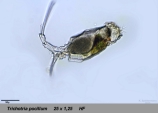
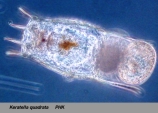
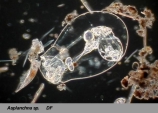
Rotifers ("wheel animals") are perhaps the most beautiful organisms amateurs can study using a microscope. At the front end they all have a pair of retractable lobes covered with cilia. The coordinated movement of these cilia gives the impression of two rotating wheels (rotifer = wheel bearer). This "wheel organ" whirls food into the mouth of the rotifers, planktic species use it furthermore for locomotion. If disturbed the wheel organ will be retracted at once.
About 2000 species are known, mainly freshwater forms. Many of them are planktic, but many others are sessile or move by inchworming on the substrate. They can be found in any biotope which is wet at least for a certain time (e.g. wet moss, water filled pits between leaf and stem). Slow desiccation leads to a special kind of anabiosis, called "anhydrobiosis". This enables rotifers to survive under dry conditions for many months, sometimes even for many years. Moreover they produce "resting eggs" which can tolerate even extremely unfavourable conditions. So no wonder rotifers appear after a short time after hay has been moistened with water ("infusion of hay").
Rotifers must be studied alive. Contact with fixing agents leads to instant contraction. Then only species with a carapace can be identified. The quick movement of rotifers can be reduced by adding some quince slime or a solution of Polyethyleneglycol. Examination using brightfield-microscopy (HF) provides magnificent pictures, but the use of phase contrast (PHK) or differential phase contrast (DIK) is to be preferred. Sometimes darkfield microscopy (DF) can be applied successfully.
Studying rotifers is especially advisable for amateurs, as the genus can be established easily, and often even the species can be identified.
The pictures on display have been taken by Dr.K.Spiekermann, a member of our group. The pictures have been down-sampled, the tinge has been readjusted.
 |
 |
 |
 |
 |
 |
 |
 |
 |
 |
 |
 |
 |
 |
 |
 |
 |
 |
 |
 |
 |
 |
 |
 |
 |
 |
 |
 |
 |
 |
 |
 |
 |
 |
 |
 |
 |
 |
 |
 |
Copyright: Dr.K.Spiekermann klausspiekermann@gmx.net